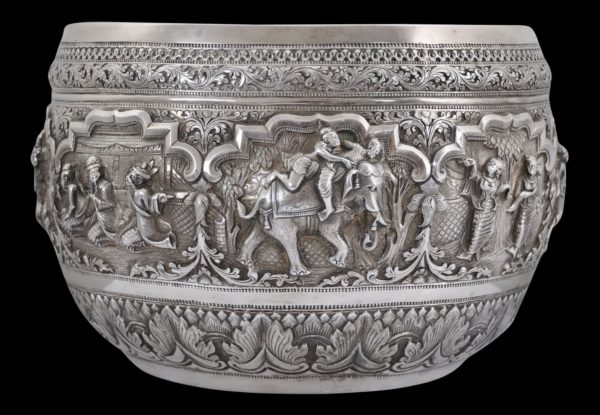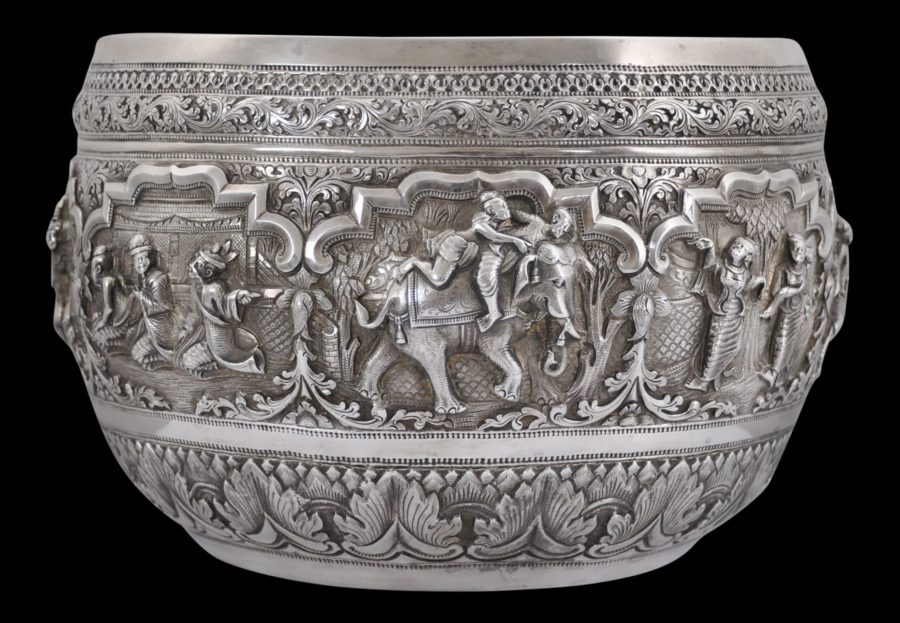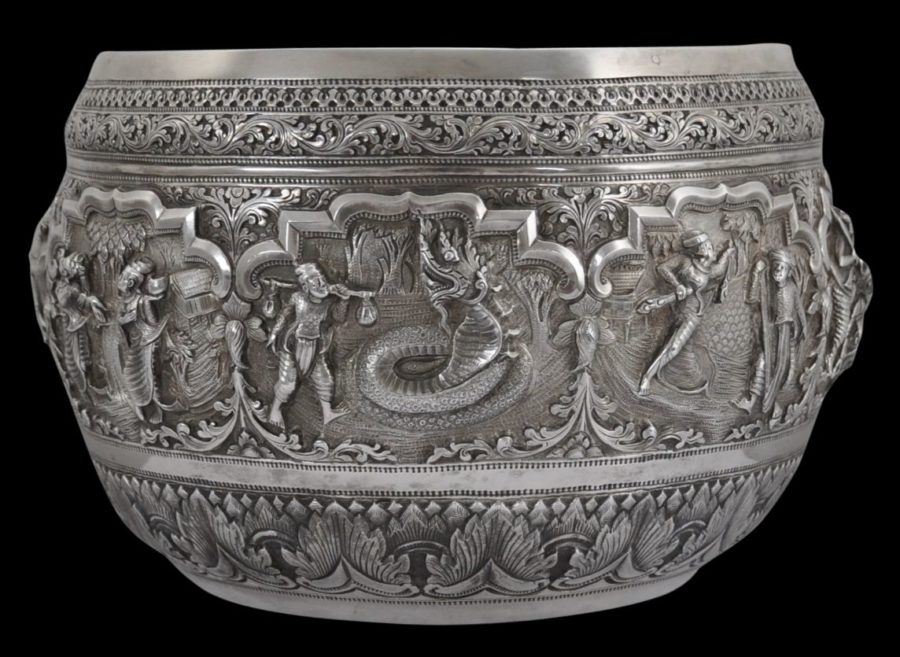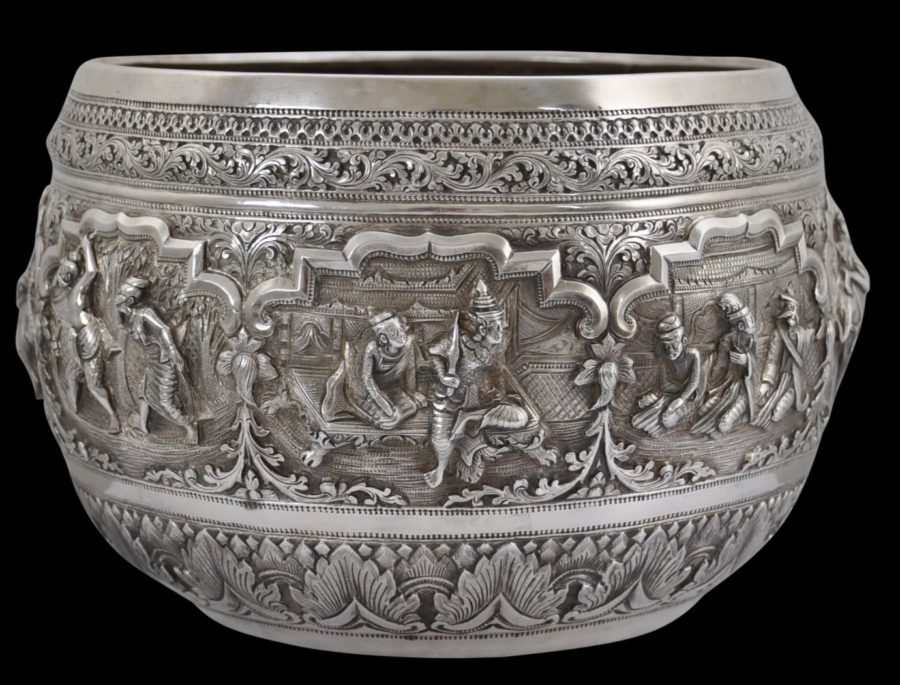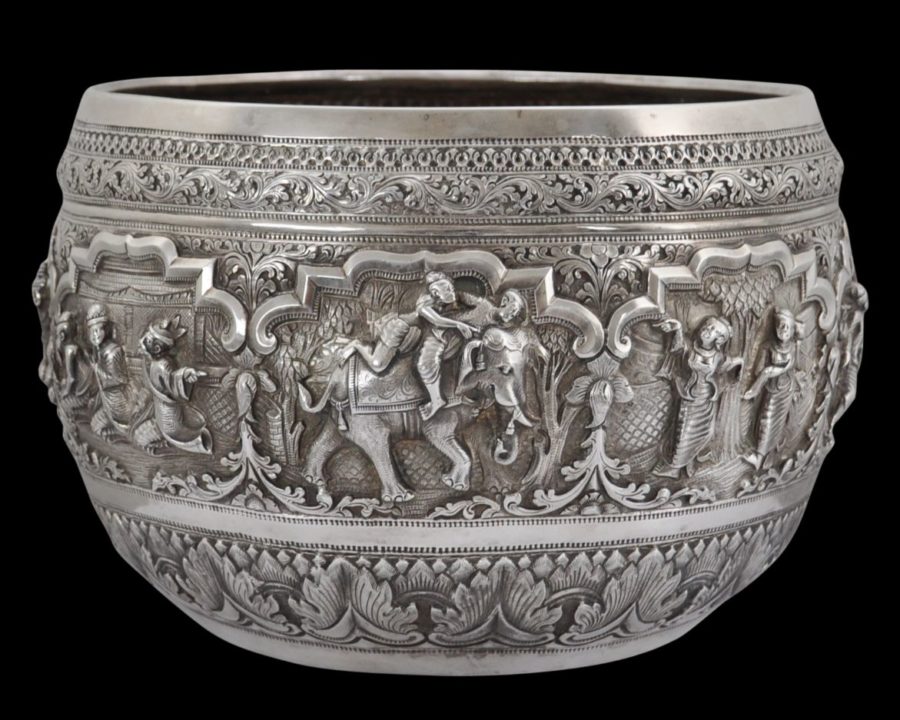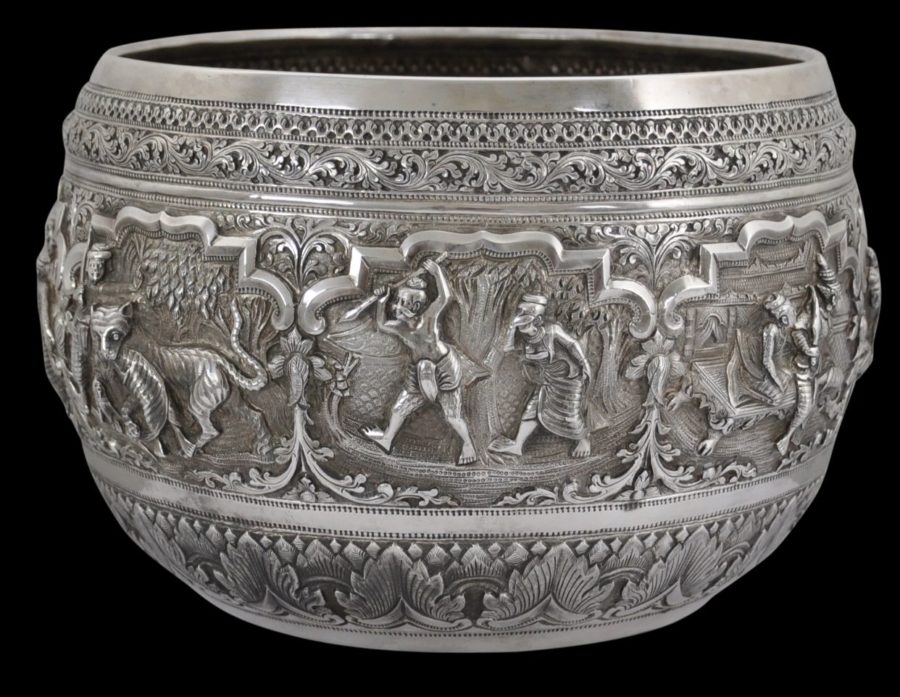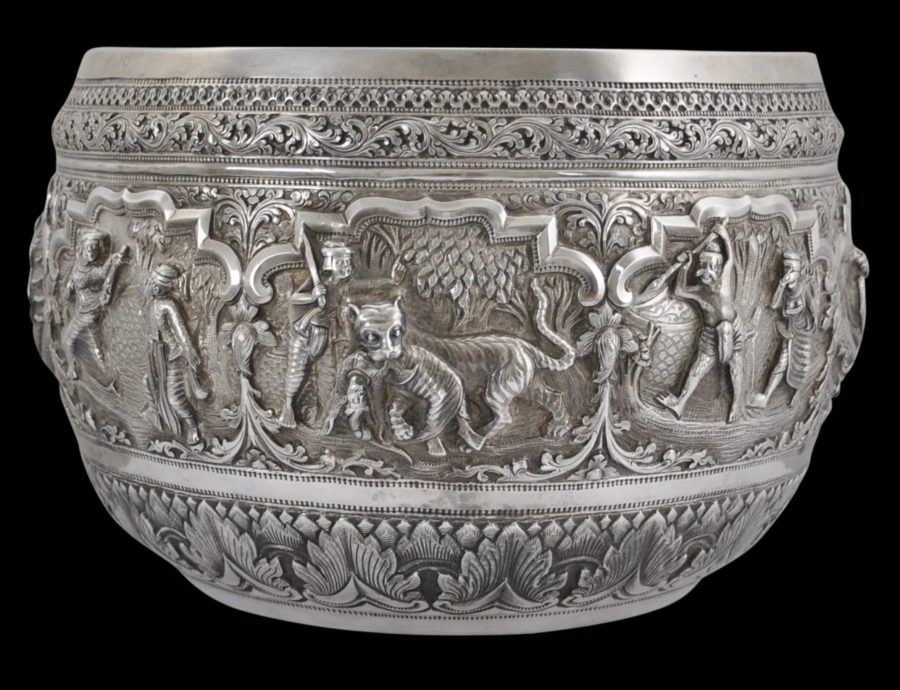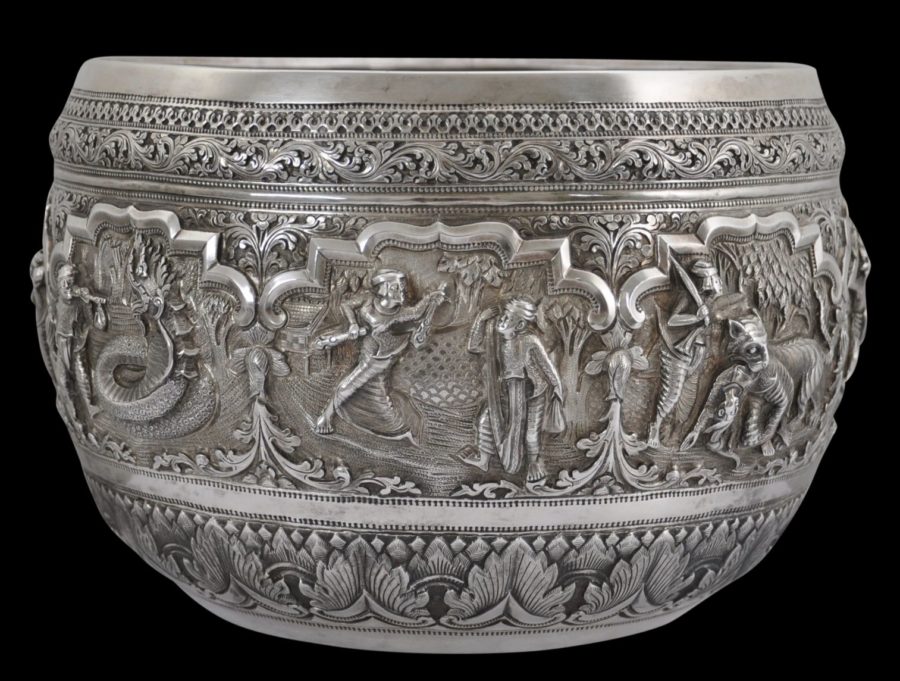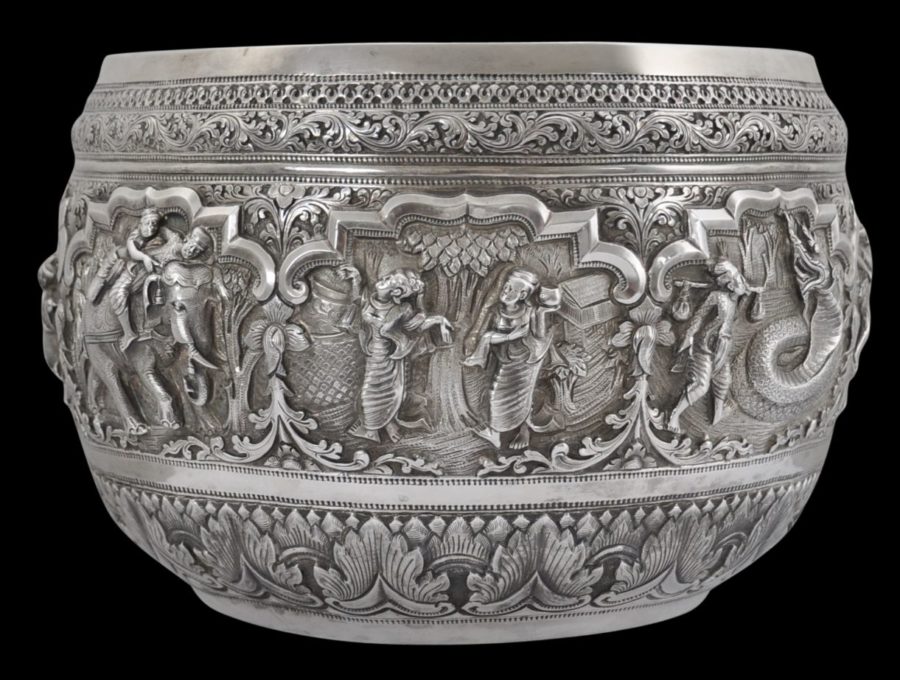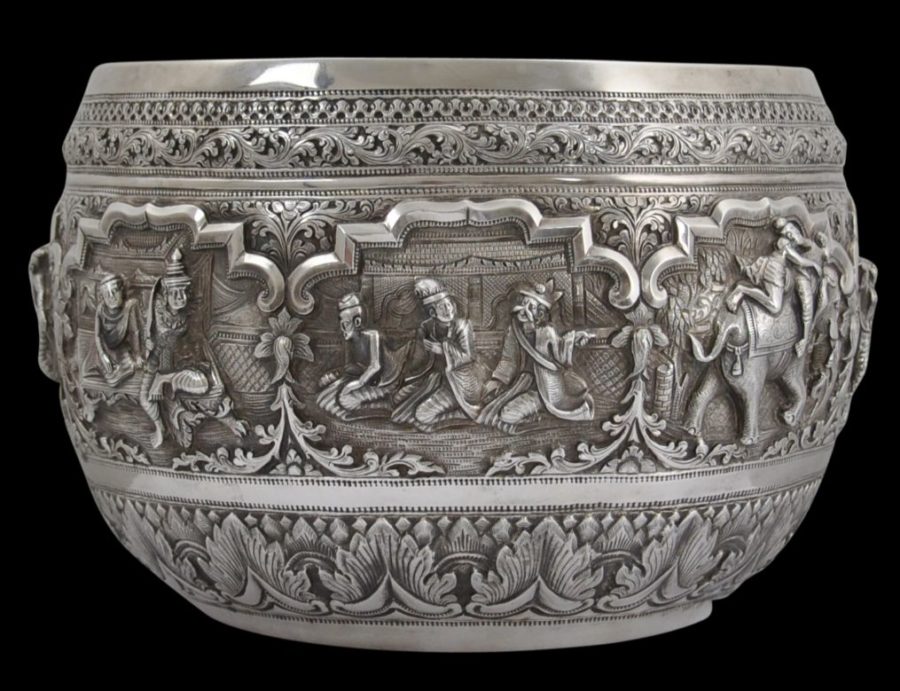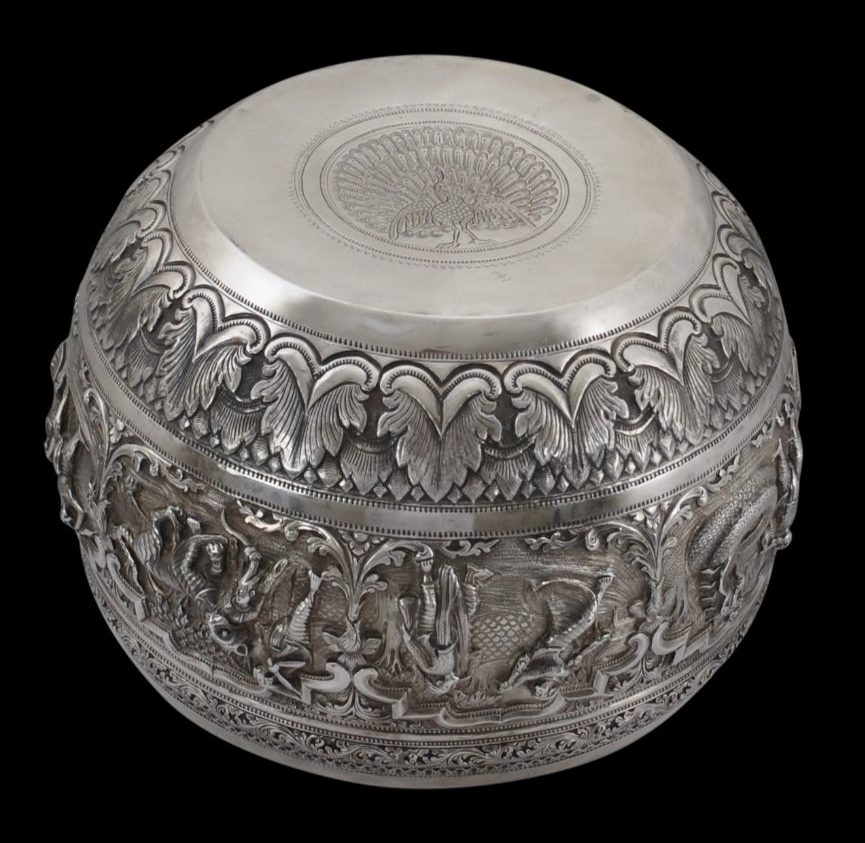This is a superb Burmese silver bowl. The three-dimensional quality of the silverwork is outstanding, and is not quite captured in the photographs here. It is also heavy for its size. The walls are thick (there are no holes) and the silver used is relatively high grade.
The repousse work shows eight separate scenes from a Burmese legend. Included is an unusual scene of two men in Burmese attire grappling atop an elephant, a king and his consort seated atop a traditional Burmese throne, a tiger carrying off a Burmese lady with very long hair, and a figure being confronted by a Burmese naga creature. These scenes are separated by cusped arches and flowers that emit exaggerated stamens. Unusually, a thin, plain, unadorned band runs around the bowl beneath the scenes.
The fluidity and dynamism of the scenes and the characters involved is complex and masterful. This is one of the better Burmese silver bowls we have seen.
Both the upper and lower borders are fine and comprise leafy scrolls.
The base is finely engraved with a large male peacock in a roundel. Some researchers argue that this is a ‘signature’. More probably, it is simply more design.
Bowls such as these had no ceremonial or religious use; they are purely decorative. Their shape is supposedly based on Burmese monks’ begging or alms bowls (one of the eight parikkharas or possessions allowed a monk). In turn, such bowls are based on a bowl that the Buddha himself is said to have used. But although the shape of such bowls is based on the monk’s begging bowl, ironically, Burmese monks are prohibited from touching gold or silver. Accordingly, Burmese silversmiths did not use their skills on religious objects unlike silversmiths in other Buddhist lands such as Tibet or Sri Lanka.
Overall, this bowl is a very fine work of art. Importantly, it was acquired in the UK and most probably has been in the UK since the colonial era. It is without dents, splits or repairs. Unlike with many extant (old) Burmese bowls, the details of the figures are crisp and show little or no sign of having been polished down over the decades.
References
Fraser-Lu, S., Silverware of South-East Asia, Oxford University Press, 1989.
Fraser-Lu, S., Burmese Crafts: Past and Present, Oxford University Press, 1994.
Tilly, H.L., The Silverwork of Burma (with Photographs by P. Klier), The Superintendent, Government Printing, 1902.
Tilly, H.L., Modern Burmese Silverwork (with Photographs by P. Klier), The Superintendent, Government Printing, 1904.


